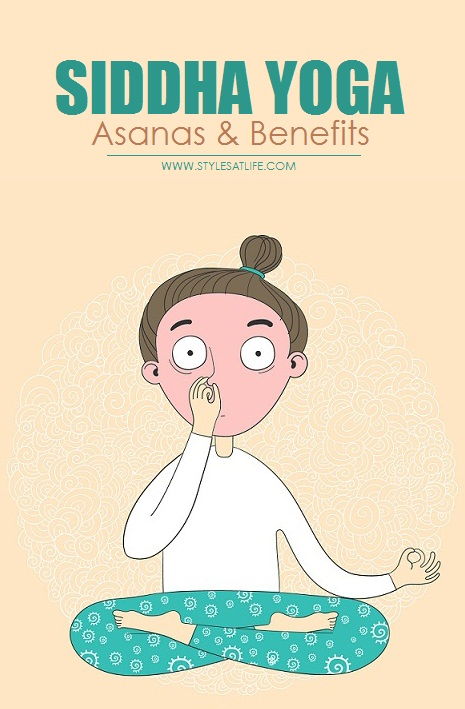Siddha Yoga Asanas and Benefits | Styles At Life
Yoga and meditation has been practiced by Indians since forever. Siddha yoga is a particular kind of yoga that was discovered and developed by Muktananda. Gurumayi Chidvilasananda is the present spiritual head of this sect. It has two main ashrams devoted to its teachings. These are namely Gurudev Siddha Peeth and Shree Muktananda Ashram. The first being located in India in Ganeshpuri and the latter in upstate New York.

Guru Muktananda:
Siddha Yoga is the name given to a spiritual transformation of your soul. It is a path of inner transformation and discipline. Practice of Siddha yoga elevates your soul to a higher level of vibration. The first step of mastering this art is shaktipat-diksha, literally translated as “initiation by descent of divine power”. This initiation is done by the guru who guides its students through the various teachings and scriptures of Siddha yoga.
See More: Super Brain Yoga Steps
To master Siddha yoga, you have to have a great sense of discipline and be extremely serious about this endeavour, for the students of Siddha yoga are made to spend a lot of time studying the teachings and practices of this yoga for a long time to help them imbibe its principles. Once you’ve been initiated you will become more aware of the self.
The mission statement of the Siddha yogis is: “To constantly impart the knowledge of the Self”. While the Siddha yoga vision statement is: “For everyone, everywhere, to realize the presence of divinity in themselves and creation, the cessation of all miseries and suffering, and the attainment of supreme bliss”.
Muktananda, the founder of Siddha Yoga was initiated by his guru Nityananda. Nityananada was born in Mahrastra and came to Ganeshpuri, a small village in 1936. There he established a small temple devoted to Shiva. His devotion and highly principled character allowed his popularity to rise to such a height that his temple soon became an ashram.
It was here that Muktananda received his initiation and attained moksha after nine more years of sadhana or meditation and discipleship.
See More: Ananda Marga Yoga
The scriptures followed by Siddha yogis include the Vedas, the Upanishads, the Bhagavad Gita, the Viveka Chudamani of Shankaracharya, and the Yoga Vasistha. They draw inspiration from the teachings of the philosophy of the Maharashtran poet-saints and Kashmir Shaivism.
Siddha Yoga aims to make one better acquainted with the vastness of one’s own soul. It’s practices are thus aimed to help you open your inner eye. It involves meditation and chanting of mantras like that of the ever famous – ‘Om namah Shivaya’. On the whole there are two main kinds of chanting used by Siddha Yogis. These are ‘Nama Sankirtana’ and ‘Swadhyaya’. Nama Sankirtana chantings are lyrical teachings from the Vedas and other texts. Swadhyaya on the other hand are reading of more complicated Sanskrit texts.
Muktananda estabilished the SYDA foundation in 1974 to protect, preserve, and facilitate the dissemination of the Siddha Yoga teachings. Today it offers a variety of courses throughout the year that attract several avid meditators.
Gurumayi Chidvilasananda was one of Muktananda’s earliest disciples. Her original name was Malti Shetty. Before his death Muktananda named her and her brother the co-Gurus and spiritual leaders of the Siddha Yoga path.
See More: Surya Hot Yoga
Gurumayi:
The followers of the Siddha Yoga path meet and practice meditation in satsangs, group meetings. Their practices include chanting mantras better known as japa, deep contemplation and dakshina or giving of gifts and food to sadhus and other people in need of such items.
Gurumayi has started several Siddha yoga philanthropic movements. These include The PRASAD Project which is designed to provide the basic amenities of life like food, education, health services etc to the needy and the Muktabodha Indological Research Institute which preserves the Indian scriptures and ancient Vedic traditions.
Image Source: Siddha Yoga